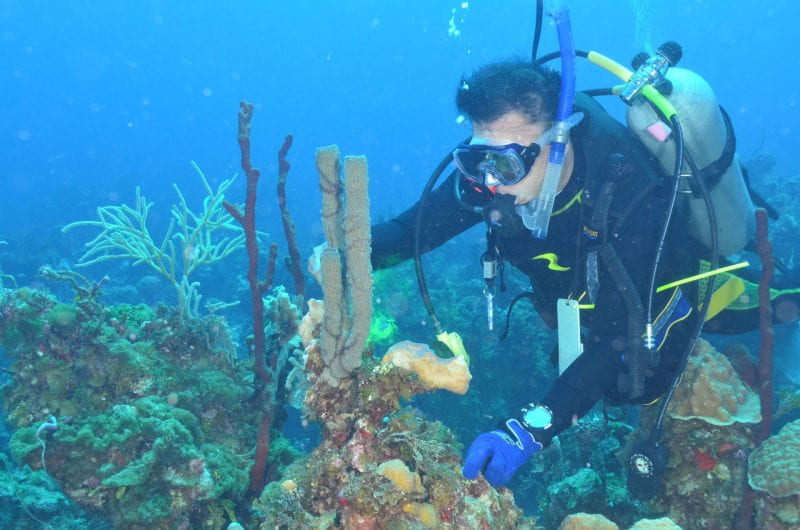Halmos Faculty’s Book Assesses Seafloor Biodiversity


Jose V. Lopez, Ph.D.
Assessing the biological diversity that lives on the seabed across more than 70% of the planet’s surface, also known as the “benthos,” provides a challenge and task that will endure well into the future. Jose V. Lopez, Ph.D., and professor in the Department of Biological Sciences in the Halmos College of Arts and Sciences and Guy Harvey Oceanographic Research Center (HCAS) decided to take up the call by writing a comprehensive reference book called Assessments and Conservation of Biological Diversity from Coral Reefs to the Deep Sea: Uncovering Buried Treasures and the Value of the Benthos(Academic Press Publishers). This decision was based on his past collective research experiences and resulted in the publication 2023.
The benthos encompasses all the organisms at the seafloor. Although daunting, Lopez was assisted by the realization that many communities of benthic organisms remain a black box. Many benthic descriptions and conservation activities understandably occur and concentrate near coastlines, which allow easier and less expensive access for researchers. For example, many studies appropriately focus on shallow coral reefs because they are considered to hold the lion’s share of biodiversity or species (estimated at ~25%) on the planet. This may be true, and many researchers and decades of study have yielded fascinating facts about reefs, such as the phenomenon of singled celled green algae and stony coral hosts living in an obligatesymbiosis (distinct organisms united to compose a whole organism) as the crucial basis for the ecosystem’s structure. Nonetheless, the very deep ocean benthic zones that lie below 800 to 4000m (bathyal zone) and 4000 to 6500 (abyssal zone), represent the largest surface habitats on the planet and have been understudied. These zones have extreme living conditions (4oC average temperature and high hydrostatic pressures). However, deep sea expeditions require much planning and can be expensive. In the book, Lopez describes how more often remotely operated vehicles (ROVs) or sonar must be applied to obtain useful views of the deep seabed.
These understudied seabed habitats will undoubtedly yield many biological surprises – what may live there and how they survive. The new Assessments… book connects various topics (genomics and cryptic taxa) related to biodiversity via data, review articles, anecdotes, public policy and even art. For example, besides sporadic mining operations, or the search for sunken treasures (or wrecks such as the RMS Titanic), the deep seabed has not been accurately mapped. This may change over the next few decades. Overall, Lopez recounts that “we know the surface of the moon better than we do what lies on the bottom of the ocean, even though the latter is closer”. His laboratory research on the microbial communities of marine sediments and reading the whole genomes of benthic invertebrates attempts to add to the scientific knowledge of the benthos. For information about the book, see https://shop.elsevier.com/books/assessments-and-conservation-of-biological-diversity-from-coral-reefs-to-the-deep-sea/lopez/978-0-12-824112-7
Posted 01/14/24